




| Green Tiger Beetle (Cicindela campestris (Linnaeus, 1758)) |





|
|
Scientific name: Cicindela campestris (Linnaeus, 1758) Common name: Green Tiger Beetle French name: Cicindèle champêtre Order: Coleoptera Family: Carabidae Wingspan : 12-18 mm Biotope: Clearings, road sides, sand quarries, dunes. Preference for sunny places with bare ground. Geographic area: Europe, North Africa, Middle East, western Asia. Observation period : All year but mainly from March to September. |
The Green Tiger Beetle is a beautiful beetle with green yellow to blue green elytra, sometimes more blackish, with some white spots. One rounded one near the centre of each elytron and three small ones near the external edge. The sides of the pronotum, the outer edges of the elytra, the legs except the tarsi and the four first articles of the antennae are copper reddish. The long legs, adapted to fast running, are covered with white hairs. Green Tiger Beetles have large bulging eyes. The mandibles are strong, curved and dented. They are used to capture other insects. You can recognize females with the presence of two dark spots, one on each side of the elytral suture, at about one third of the elytra length. The larvae grow inside vertical or funnel-shaped burrows. They feed by catching small insects passing near the opening hole. They can close the burrows with their head and pronotum. The abdominal tergite 5 shows a bump with hooks. It is to used by the larva to attach in the vertical burrow. Larvae can over winter one or two times. Adult Green Tiger Beetles emerge in autumn or in spring. Pay attention that in North Africa, in the Iberian Peninsula and in southern France you can find the Moroccan Tiger Beetle (Cicindela maroccana) which is very similar to the Green Tiger Beetle. It mainly differs by the presence of two copper reddish patches on the pronotum. |
| [To know more about the Green Tiger Beetle] [Next picture] [Top] |
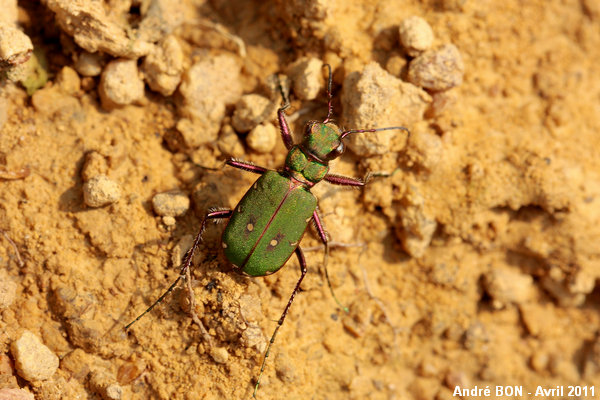
|
I have observed this Green Tiger Beetle in a clearing. I have been surprised by its flight speed. It has not been easy to shoot pictures and I had to wait, perfectly immobile, so that it came again and land at the same place where I saw it before. The lack of black patches on each side of the suture of the elytra, at about one third of the length, indicates one male. |
| [To know more about the Green Tiger Beetle] [Next picture] [Previous picture] [Top] |
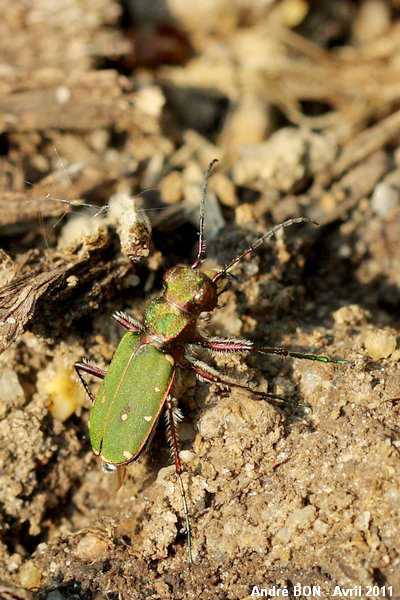
|
After having secured some upper side pictures, I have tried to lean down in order to shoot some side views. I have not been very successful as each time the Green Tiger Beetle darted away with a very fast flight. I have read that you need to take pictures during the fresh temperature of the morning while these insects are less active. This is the only specimen I have observed in the neighbourhood at this date. |
| [To know more about the Green Tiger Beetle] [Next picture] [Previous picture] [Top] |
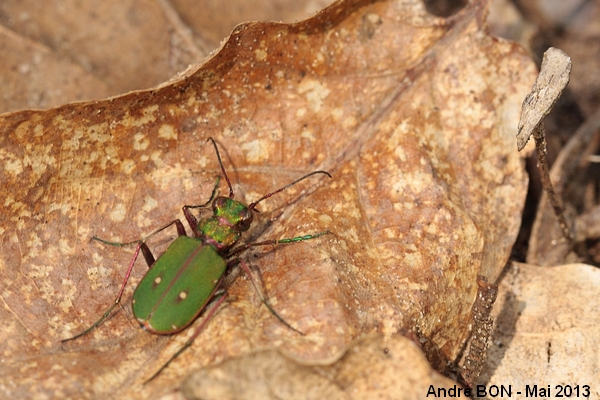
|
Here is a second observation, in the forest again. |
| [To know more about the Green Tiger Beetle] [Next picture] [Previous picture] [Top] |
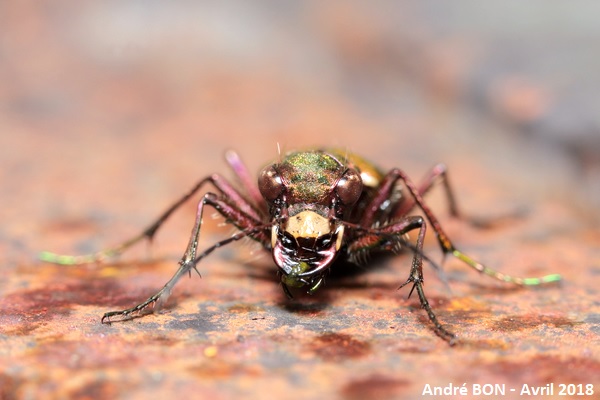
|
I found this Green Tiger Beetle trapped in a small container containing rainwater. I moved it to a dry place and was able to photograph it while it recovered from its involuntary bath. |
| [To know more about the Green Tiger Beetle] [Previous picture] [Top] |
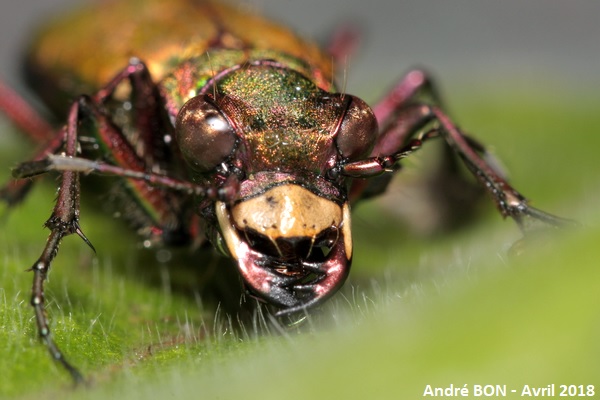
|
Here is a front view which clearly shows the powerful toothed mandibles. |